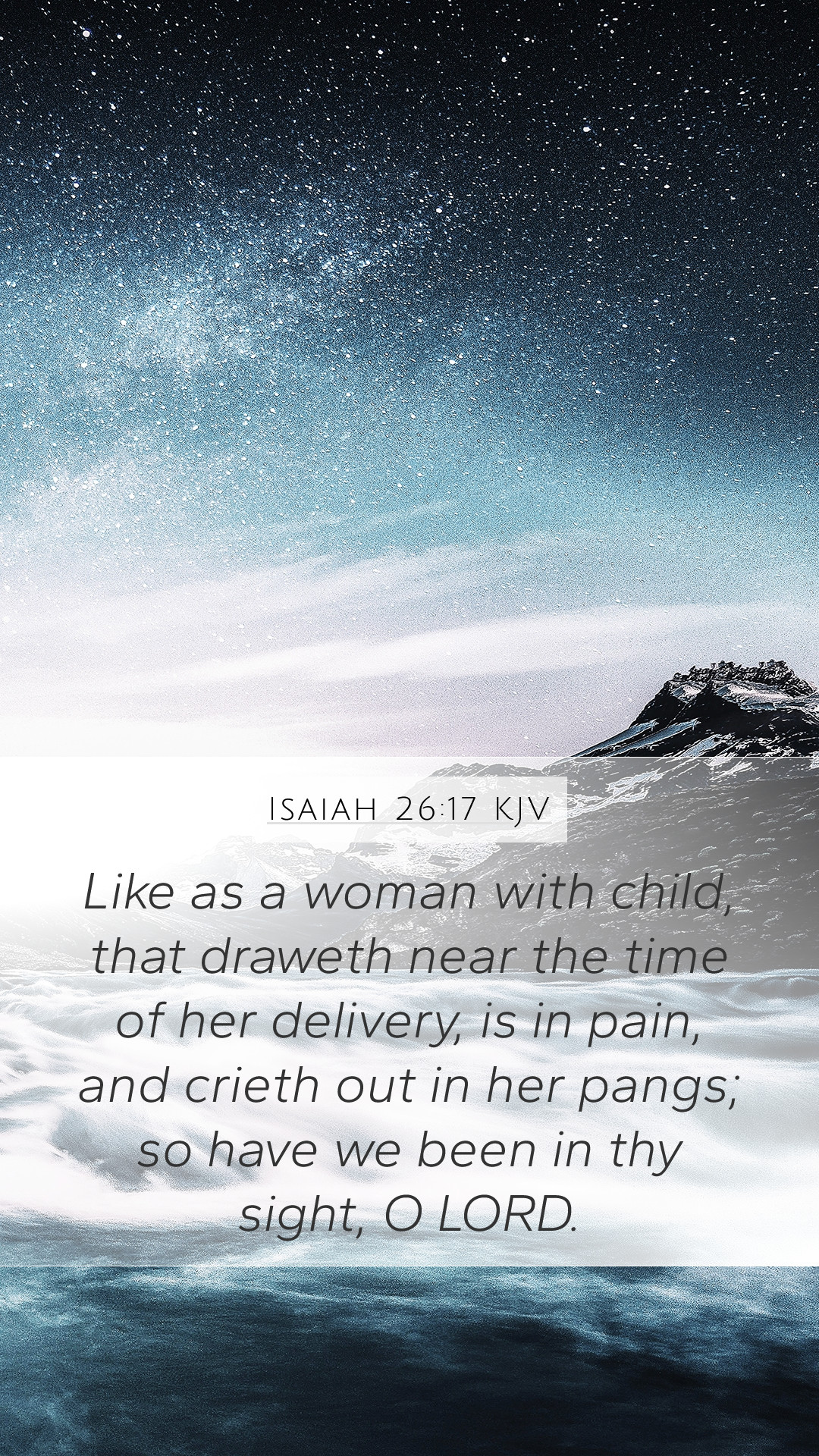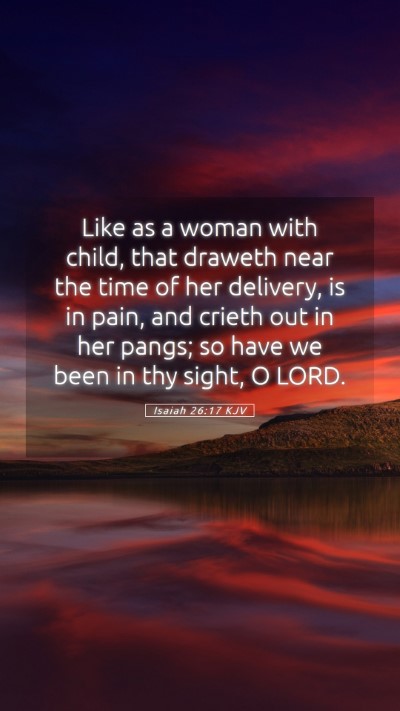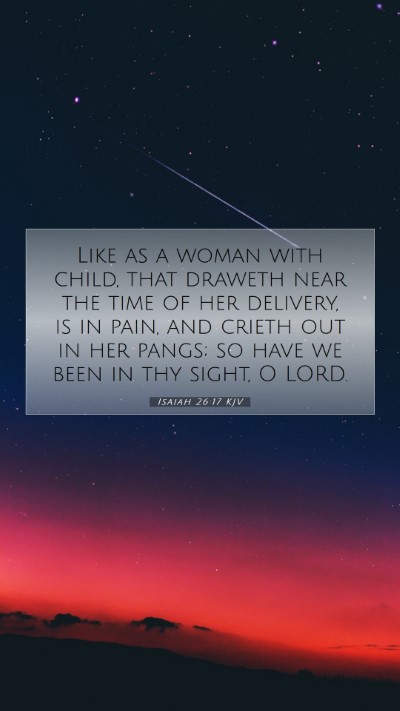Understanding Isaiah 26:17
Isaiah 26:17 reads: "Like as a woman with child, that draweth near the time of her delivery, is in pain, and crieth out in her pangs; so have we been in thy sight, O LORD."
Bible Verse Meaning
This verse is a poignant metaphor reflecting the intense emotions experienced by the people of Israel as they awaited deliverance from their trials. The imagery of a woman in labor vividly illustrates the pain and anticipation of the people as they cry out to God for salvation. This comparison of labor pains underscores not only the discomfort but also the hope of new life and deliverance that follows such suffering.
Bible Verse Interpretations
Commentators have highlighted a few key interpretations:
- Labor and Pain: The pain represents the struggles and afflictions faced by the people, emphasizing their desperation in seeking God's help.
- Expectation of Relief: Just as labor leads to the birth of a child, the verse signifies the hope of restoration and salvation that the Israelites long for.
Bible Verse Understanding
Isaiah's choice of metaphor aligns with themes found throughout the Bible that explore human suffering and divine intervention. The portrayal of God’s people as being in labor reveals both their agony and their unwavering hope in God’s promises.
Bible Verse Explanations
The verse serves an essential purpose in reminding modern readers of the cyclical nature of suffering and deliverance. Just as the woman endures pain for the joy that follows, so too the people of Israel endure their hardships with the faith that God will provide relief and restoration.
Bible Verse Commentary
The commentaries by Matthew Henry, Albert Barnes, and Adam Clarke provide rich insights into this verse. They emphasize the emotional turmoil and the intensity of the cries of the people as a reflection of genuine faith that seeks God's intervention.
Insights from Public Domain Commentaries:
-
Matthew Henry: Highlights the parallels between human suffering and divine purpose. He notes that the pangs felt by the people are akin to the birth of a new relationship with God, resulting in spiritual renewal.
-
Albert Barnes: Points out that the experience of pain is universal, and compares it to the struggles of the faithful in all generations, as they await God's promises during their trials.
-
Adam Clarke: Focuses on the necessity of enduring hardships as a precursor to experiencing God's mercy, suggesting that no pain is without purpose in God’s grand plan.
Historical Context of Isaiah 26:17
The context of Isaiah 26 is significant; the Israelites faced oppression and exile, and this verse speaks to their situation. Understanding the historical backdrop enhances our insight into the profound despair and hope woven throughout this passage.
Applying Bible Verses to Daily Life
In our contemporary lives, Isaiah 26:17 offers a powerful reminder that suffering often precedes growth and renewal. Whether in personal trials or broader societal struggles, we can find comfort in the notion that our difficulties may lead to greater joy and fulfillment through divine intervention.
Cross References
This verse connects with several other Scriptures that echo similar themes:
- Romans 8:22: "For we know that the whole creation groaneth and travaileth in pain together until now."
- John 16:21: “A woman when she is in travail hath sorrow, because her hour is come; but as soon as she is delivered of the child, she remembereth no more the anguish, for joy that a man is born into the world.”
- Psalm 126:5: "They that sow in tears shall reap in joy."
Bible Study Resources
For those engaged in Bible study groups or seeking online Bible study, exploring verses like Isaiah 26:17 provides a deeper understanding of the human experience of pain and hope.
Utilizing Bible study tools and Bible study guides can enhance your Bible study insights and offer clarity on complex verses and themes.
Conclusion
Isaiah 26:17 illustrates the intricate relationship between suffering and hope, reminding us that even in times of distress, there is a divine promise of renewal. For anyone seeking to deepen their understanding of Scripture, this verse and its commentaries provide timeless insights applicable to both ancient and modern contexts.


